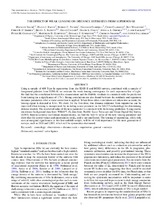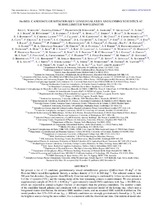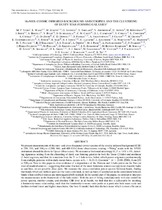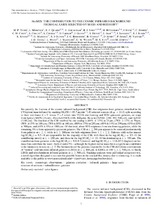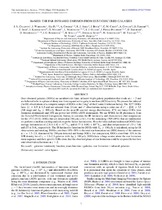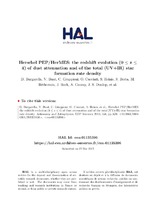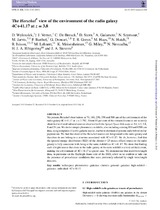Browsing Research Articles (Statistics & Population Studies) by Subject "Cosmology"
Now showing items 1-7 of 7
-
The effect of weak lensing on distance estimates from supernovae
(American Astronomical Society, 2013)Using a sample of 608 Type Ia supernovae from the SDSS-II and BOSS surveys, combined with a sample of foreground galaxies from SDSS-II, we estimate the weak lensing convergence for each supernova line of sight. We find ... -
HerMES: Candidate gravitationally lensed galaxies and lensing statistics at submillimeter wavelengths
(American Astronomical Society, 2013)Gravitational lensing increases the angular size and integrated flux of affected sources. It is exploited to investigate the mass distribution of the foreground lensing structures and the properties of the background lensed ... -
Hermes: Cosmic infrared background anisotropies and the clustering of dusty star-forming galaxies
(American Astronomical Society, 2013)Star formation is well traced by dust, which absorbs the UV/optical light produced by young stars in actively starforming regions and re-emits the energy in the far-infrared/ submillimeter (FIR/submm; e.g., Savage & ... -
HerMES: The contribution to the cosmic infrared background from galaxies selected by mass and redshift
(American Astronomical Society, 2013)The cosmic infrared background (CIB), discovered in Far Infrared Absolute Spectrophotometer (FIRAS) data from the Cosmic Background Explorer (COBE; Puget et al. 1996; Fixsen et al. 1998), originates from thermal ... -
HerMES: The far-infrared emission from dust-obscured galaxies
(American Astronomical Society, 2013)The far-infrared (far-IR) luminosities of luminous infrared galaxies (LIRGs) and ultra-LIRGs (ULIRGs) are dominated by reprocessed thermal dust emission, due to a combination of star formation and active galactic nucleus ... -
Herschel PEP/HerMES: the redshift evolution of dust attenuation and of the total (UV+IR) star formation rate density
(EDP Sciences, 2013)Using new homogeneous luminosity functions (LFs) in the far-ultraviolet (FUV) from VVDS and in the far-infrared (FIR) from Herschel/PEP and Herschel/HerMES, we studied the evolution of the dust attenuation with redshift. ... -
The Herschel* view of the environment of the radio galaxy 4C+41.17 at z = 3.8
(Oxford University Press, 2013)We present Herschel observations at 70, 160, 250, 350 and 500 μm of the environment of the radio galaxy 4C+41.17 at z = 3.792. About 65 per cent of the extracted sources are securely identified with mid-infrared sources ...

